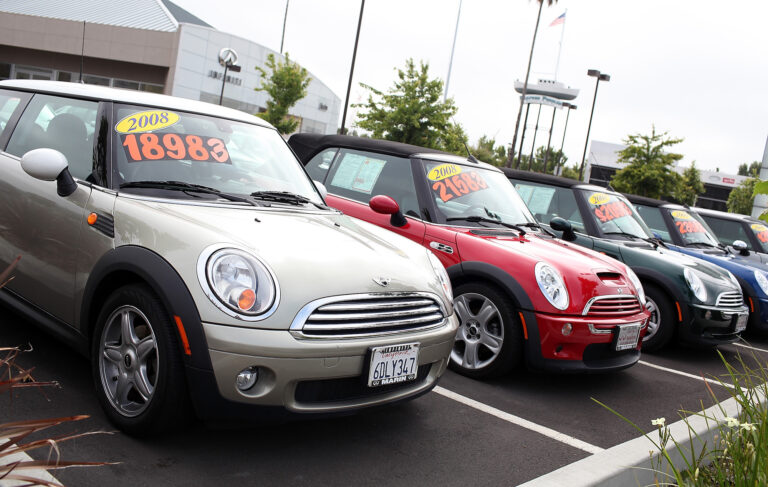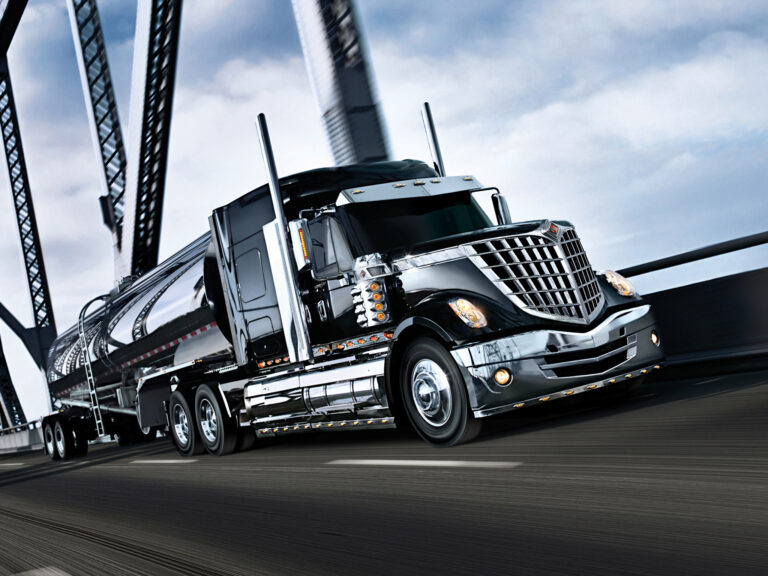3 Letter Car Brand Names: The Power of Brevity in Automotive Branding
3 Letter Car Brand Names: The Power of Brevity in Automotive Branding cars.truckstrend.com
In the vast and competitive landscape of the automotive industry, brand names play a pivotal role in recognition, recall, and consumer perception. While many car manufacturers opt for multi-syllable names or complex acronyms, a select few have embraced the power of extreme brevity: the three-letter brand name. These concise monikers are more than just a marketing quirk; they represent a strategic choice in branding, aiming for immediate impact, global adaptability, and a distinctive identity in a crowded market.
This article delves into the intriguing world of 3-letter car brand names. We will explore their inherent advantages and unique challenges, examine prominent examples that have successfully leveraged this minimalist approach, and provide insights into why some brands choose to condense their identity into such a compact form.
3 Letter Car Brand Names: The Power of Brevity in Automotive Branding
The Allure of Brevity: Why Three Letters?
The decision to distill a brand’s entire identity into just three letters is a deliberate one, driven by several compelling advantages:
- Unparalleled Memorability and Recall: In an age of information overload, simplicity reigns supreme. A three-letter name is inherently easy to remember, pronounce, and recall, making it highly effective in advertising and word-of-mouth marketing. It sticks in the mind effortlessly.
- Global Adaptability and Pronunciation: Longer names can be challenging to translate, pronounce, or even register across different languages and cultures. Three-letter names, often designed to be phonetically simple or acronyms, bypass many linguistic barriers, facilitating smoother global expansion. They are less likely to carry unintended negative connotations in foreign markets.
- Strong Visual Identity and Logo Design: A short name lends itself exceptionally well to minimalist, impactful logo design. The fewer letters there are, the more focus can be placed on typography, iconography, and overall aesthetic appeal. This often results in sleek, modern, and easily recognizable emblems that work well across various media, from vehicle badging to digital interfaces.
- Perception of Modernity and Efficiency: In the automotive world, especially with the rise of electric vehicles and tech-driven mobility, short, punchy names can convey a sense of modernity, innovation, and streamlined efficiency. They often feel less traditional and more forward-thinking.
- Ease of Digital Presence: Three-letter names are highly desirable for digital real estate – domain names, social media handles, and app names. They are concise, easy to type, and less prone to typos, enhancing online discoverability and brand consistency.
![]()
However, this brevity also presents unique challenges. A three-letter name offers little descriptive power, meaning the brand must invest heavily in marketing and product performance to imbue the name with meaning and association. It demands a powerful brand narrative and a distinct product identity to prevent it from being perceived as generic or an arbitrary acronym.
Navigating the Automotive Alphabet: Prominent 3-Letter Car Brands
While not commonplace, several significant automotive brands have successfully adopted and thrived with a three-letter identity. These examples illustrate diverse strategies and market positions:
1. Kia (South Korea)
Perhaps one of the most globally recognized 3-letter car brands, Kia has transformed itself from a budget-friendly option to a formidable contender in the mainstream market. Founded in 1944 as a manufacturer of steel tubing and bicycle parts, Kia Motors (derived from the Sino-Korean characters "Ki" (起, to arise) and "a" (亞, Asia), meaning "Rising out of Asia") has embraced its concise name. Its journey has been marked by significant design-led transformations, product quality improvements, and aggressive market expansion. Kia’s success demonstrates that a short name, when backed by compelling products and strategic marketing, can achieve immense global recognition and desirability. Their range spans from compact cars like the Forte and Rio to popular SUVs like the Sportage and Telluride, and cutting-edge EVs like the EV6.
2. GMC (United States)
GMC, an acronym for "General Motors Company," is General Motors’ dedicated brand for trucks, SUVs, and vans. While GM itself is a two-letter abbreviation, GMC specifically markets its vehicles under this three-letter brand. Established in 1911, GMC has built a reputation for robust, capable, and increasingly premium vehicles. Unlike Chevrolet, which offers a broader range, GMC focuses on more professional-grade and upscale truck-based vehicles, often sharing platforms with Chevrolet but featuring distinct styling, trim levels, and branding. Models like the Sierra pickup, Yukon SUV, and Acadia crossover exemplify GMC’s commitment to utility and refinement, proving that an acronym can effectively carve out a strong, specialized niche.
3. Ram (United States)
Originally a line of trucks produced by Dodge, the Ram brand was spun off as a standalone division of Chrysler (now part of Stellantis) in 2009. The name "Ram" itself is three letters, evoking strength, power, and capability, perfectly aligning with its focus on pickup trucks, chassis cabs, and commercial vans. This strategic separation allowed Ram to focus exclusively on the truck market, competing directly with Ford’s F-Series and Chevrolet’s Silverado. The Ram 1500, known for its comfortable ride and luxurious interiors, has been instrumental in solidifying the brand’s premium perception within the truck segment. Ram is a prime example of how a concise, evocative name can anchor a highly specialized and successful brand.
4. BYD (China)
BYD, standing for "Build Your Dreams," is a Chinese multinational manufacturing company founded in 1995, initially focusing on rechargeable batteries. It expanded into the automotive sector in 2003 and has rapidly become a global leader in electric vehicles (EVs) and plug-in hybrids. The three-letter acronym, while having a full meaning, is predominantly used in its abbreviated form. BYD’s success is a testament to the power of a clear mission statement encapsulated in its name and backed by innovative technology, particularly its Blade Battery. With models like the Seal, Atto 3 (Yuan Plus), and Han, BYD is challenging established automakers worldwide, demonstrating that a concise name can be synonymous with rapid innovation and global dominance in the EV space.
5. NIO (China)
NIO Inc. is a Chinese multinational automobile manufacturer headquartered in Shanghai, specializing in designing and developing electric vehicles. Founded in 2014, NIO quickly established itself as a premium EV brand, often compared to Tesla. The three-letter name, while not an explicit acronym, carries a sense of modernity and forward-thinking. NIO distinguishes itself with innovative services like battery swapping stations, allowing owners to exchange a depleted battery for a fully charged one in minutes. Models like the ES8, ET7, and EC6 showcase NIO’s commitment to high-performance, technologically advanced, and design-centric electric vehicles, building a loyal community around its concise, distinctive name.
6. WEY (China)
WEY is a luxury SUV brand launched by Great Wall Motor, a prominent Chinese automaker, in 2016. Named after the founder of Great Wall Motor, Jack Wey, this brand aims to compete with established premium brands by offering high-quality, technologically advanced, and stylish SUVs. The three-letter name is personal and unique, allowing WEY to craft a distinct identity within the competitive luxury segment. Models like the Mocha and Latte reflect a sophisticated design language and focus on advanced features, demonstrating that a short, founder-inspired name can be leveraged to establish a new luxury marque.
7. ORA (China)
Another brand under the Great Wall Motor umbrella, ORA (originally standing for "Open, Reliable, Alternative") is an all-electric car brand launched in 2018. ORA vehicles are characterized by their retro-futuristic design, vibrant colors, and focus on urban mobility. The three-letter name is catchy and memorable, reflecting the brand’s playful and modern approach to EVs. Models like the Good Cat (also known as Funky Cat in some markets) and Ballet Cat aim to attract younger, style-conscious buyers, proving that a concise name can be used to build a brand with a strong, quirky personality in the burgeoning EV market.
Challenges and Strategic Solutions for 3-Letter Brands
While powerful, the extreme brevity of 3-letter names presents specific challenges:
- Lack of Inherent Meaning: Unlike descriptive names (e.g., Land Rover), a 3-letter name often starts as a blank slate. This requires significant investment in marketing to imbue the name with brand values and product associations.
- Risk of Genericism: Without a strong brand narrative, a short name can feel generic or uninspired, failing to differentiate itself.
- Trademark Complexity: Common three-letter combinations might already be trademarked in other industries, requiring extensive legal diligence.
To overcome these, successful 3-letter brands often employ several strategies:
- Strong Visual Identity: Leveraging the brevity for iconic logos and distinctive design languages (e.g., Kia’s redesigned emblem, NIO’s clean lines).
- Clear Brand Narrative: Creating a compelling story or mission behind the name (e.g., BYD’s "Build Your Dreams").
- Product Excellence: Consistently delivering high-quality, innovative vehicles that speak for themselves.
- Targeted Marketing: Focusing on specific demographics or market segments to build strong, loyal communities (e.g., Ram for truck enthusiasts, ORA for urban trendsetters).
- Memorable Slogans/Taglines: Using a longer phrase to add context and meaning to the short name.
The Future of Automotive Branding
As the automotive industry continues its rapid transformation, particularly with the shift towards electric, autonomous, and connected vehicles, the appeal of short, impactful brand names is likely to grow. New entrants, often tech-centric, seek names that are modern, globally scalable, and easily digestible in the digital realm. The three-letter format, whether as a true word, an acronym, or an abstract sound, offers a powerful tool for brands aiming for immediate recognition and a strong, concise identity in an increasingly complex and competitive global market.
Table: Key Information on Prominent 3-Letter Car Brands
This table provides an overview of the discussed 3-letter car brands, including their country of origin, parent company, primary market focus, and their general market positioning and representative price segment. Please note that "price segment" refers to the typical range of their models (e.g., mainstream, premium, luxury), not a specific price for the brand name itself.
| Brand Name | Country of Origin | Parent Company | Primary Market Focus | Market Positioning & Representative Price Segment | Notable Models (Examples) |
|---|---|---|---|---|---|
| Kia | South Korea | Hyundai Motor Group | Global Mainstream | Mainstream to Upper-Mainstream; Mid-Range Price Segment | Sportage, Telluride, EV6, Forte |
| GMC | United States | General Motors | North America (Trucks, SUVs, Vans) | Upper-Mainstream to Premium; Mid-to-High Price Segment | Sierra, Yukon, Acadia |
| Ram | United States | Stellantis | Global (Pickup Trucks, Vans) | Mainstream to Premium; Mid-to-High Price Segment | Ram 1500, Ram 2500, ProMaster |
| BYD | China | BYD Company Limited | Global (EVs, PHEVs) | Mainstream to Upper-Mainstream EV; Mid-Range Price Segment | Seal, Atto 3 (Yuan Plus), Han |
| NIO | China | NIO Inc. | Global (Premium EVs) | Premium EV; High-End Price Segment | ES8, ET7, EC6 |
| WEY | China | Great Wall Motor | China (Luxury SUVs) | Luxury; Upper-Mid to High Price Segment | Mocha, Latte |
| ORA | China | Great Wall Motor | China (Urban EVs) | Mainstream EV; Entry-to-Mid-Range Price Segment | Good Cat (Funky Cat), Ballet Cat |
Frequently Asked Questions (FAQs) About 3-Letter Car Brands
Q1: Why are there relatively few 3-letter car brands compared to longer names?
A1: While 3-letter names offer benefits like memorability, they also lack inherent descriptive power. Most car manufacturers prefer names that convey heritage, a specific attribute (e.g., "Explorer"), or a more traditional feel. Creating meaning for a very short name requires significant and consistent marketing investment.
Q2: Do 3-letter names help with global expansion?
A2: Yes, they often do. Short, simple names are generally easier to pronounce and remember across different languages and cultures, and they are less likely to carry unintended negative connotations than longer, more complex names. This makes them highly adaptable for global markets.
Q3: Are these 3-letter brands typically new companies, or do older brands adopt them?
A3: It’s a mix. Brands like Kia have a long history but evolved into their concise branding. GMC and Ram were spun off from larger entities. However, many newer, especially tech-focused EV brands (like BYD, NIO, ORA, WEY), choose short names to project a modern, agile image.
Q4: How do 3-letter brands build recognition and identity without a descriptive name?
A4: They rely heavily on strong visual branding (distinctive logos, vehicle design language), consistent and compelling marketing campaigns, and ultimately, the quality and performance of their vehicles. They often create a strong brand narrative or mission statement to add depth to their concise name (e.g., BYD’s "Build Your Dreams").
Q5: Is it harder to trademark a 3-letter name?
A5: It can be. Common three-letter combinations or acronyms are more likely to have existing trademarks in other industries, requiring extensive legal research and potentially limiting options. Brands need to ensure their chosen name is unique within the automotive sector and ideally across relevant categories globally to avoid legal challenges.
Conclusion
The world of 3-letter car brand names is a testament to the enduring power of simplicity in branding. While demanding a greater commitment to marketing and product excellence to imbue them with meaning, these concise monikers offer unparalleled memorability, global adaptability, and visual impact. From the mainstream success of Kia to the specialized focus of Ram and GMC, and the rapid rise of EV innovators like BYD, NIO, WEY, and ORA, these brands demonstrate that brevity, when strategically applied, can be a potent force in shaping automotive identity and driving market success. In an increasingly complex world, the clear, sharp impact of a three-letter brand name continues to resonate, proving that sometimes, less truly is more.





